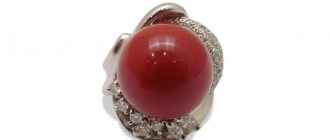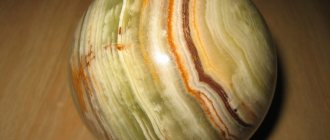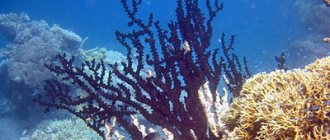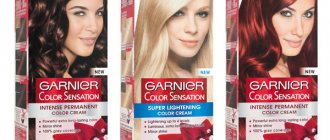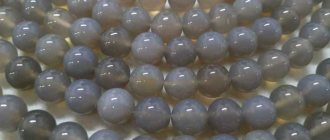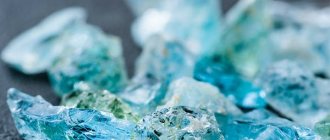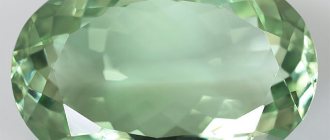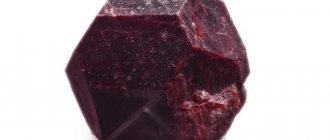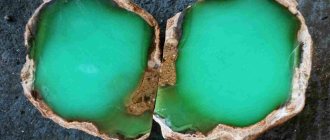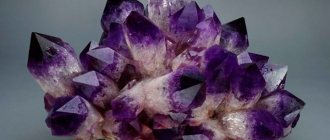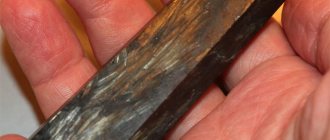Corals are amazing in their appearance and structure. These inhabitants of the seas and oceans outwardly resemble frozen lava, but in fact, they are full-fledged animals, polyps. It’s good that you can place this beauty in your own home aquarium with sea water and every day admire the bizarre forms and amazing life of these coelenterate inhabitants of the depths. We will consider further what corals to choose for the aquarium, which species is better to take a closer look at and how compatible they are with other inhabitants.
What are the different shapes of corals?
Corals differ from each other, first of all, in their bizarre shape. There are several common classes, one of which has already become extinct.
Eight-beam
Eight-rayed are common polyps that look like small, voluminous bushes right on the rocks or on the seabed. They are small in height, rarely exceeding 1 cm. They received the name “eight-rayed” due to the fact that they have eight tentacles and partitions located on the cap.
Eight-rayed - common polyps, similar to voluminous bushes
Six-beam
Another common type of polyp. Their peculiarity is that they can grow singly, and sometimes they are found in clusters and colonies. They are characterized by not eight, but six rays in the form of tentacles.
It is less common to find five or even ten tentacles. But this is rather an exception
Common species, can grow singly
Quadruple
This type of polyp has been lost and is considered extinct. They were widespread during the period BC and Paleozoic times.
What is a coral polyp?
It would be more correct to ask “who is this,” because only at first glance it seems that coral reefs are piles of calcareous formations consisting of the skeletons of dead polyps. But in fact, if we are talking about a living reef, coral polyps are animals. And also on the same reef there may be skeletons of dead polyps that make up the skeleton of the reef. And on the surface there may be living polyps.
So, Red Sea coral polyp is a living organism belonging to the species Cnidari phylum. It has sizes from 1 to 30 mm. The polyp consists of tentacles and a gastric part. The tentacles have special stinging cells that secrete a burning liquid to catch prey. Polyps feed on plankton. As we said earlier, living corals actively coexist with zooxanthellae - special algae that give polyps their color. Coral polyps of the species Cnidari phylum also include jellyfish and sea anemones , which are participants in the life cycle of the polyps.
Observing the life of corals, you can compare them with plants that live on land. Let's look at several of their varieties.
Types of corals by color
Nature has done its best, and on the ocean floor you can find polyps of various colors and shades, and many of them can be placed in a marine-style aquarium. The following colors are considered the most common:
- brown;
- red;
- beige;
- white;
- dairy;
- pink;
- blue;
- green;
- peach;
- black.
On the ocean floor you can find polyps of various colors
Yellow and pearlescent corals are less common. Violet shades are very rare.
Some have heterogeneous colors, and their bodies are painted in two or three contrasting shades. Other species change color depending on the time of day, water temperature and other conditions.
Magic properties
When purchasing coral, the magical properties of the stone are determined by its color scheme. Pink and red gems are suitable for romantic people. With the help of the magic of the mineral, they will be able to develop their imagination and creativity. The stone helps you feel the world subtly. Coral beads will reliably protect you from evil forces.
The white mineral helps to develop wisdom and become more rational. The magical properties of the stone provide protection from dangers. Regardless of the shade, the gem helps to avoid troubles on long journeys.
Astrologers recommend wearing the mineral only during the waxing of the moon. During the full moon, the stones should be washed with water and not put on until the new moon arrives. Using this technique, it will be possible to renew the energy of the gem.
Important! You should not wear such jewelry too often. They are capable of developing negative qualities, making a person lazier and more infantile.
Top most unpretentious soft corals
Soft corals for a marine aquarium are the best solution, as they are unpretentious to the conditions and have a spectacular appearance. We will talk about the most common types.
Gorgonians
Resident of the Pacific depths. If you look closely, from a distance it resembles a branched tree of a bizarre shape. In height with active growth it can reach 50 cm.
An excellent decorative element for an aquarium. It is not afraid of strong currents, the optimal water temperature in the aquarium is from +22 to +27 degrees Celsius. Needs frequent feeding to grow and develop. Eats phytoplankton and debris from the bottom.
Because of its color it is called black coral. However, the true shade is brown, and the blackness appears due to lack of sunlight.
Gorgonians are an excellent decorative element for an aquarium.
Like other Red Sea corals, it prefers low levels of salinity and acidity.
Sarcophytons
One of the most common polyps in the Pacific region. Similar to sedum. It is large in size, and two-meter specimens can be found on the ocean floor. In an aquarium, the volumes are much more modest.
Prefers temperatures from +22 to +28 degrees Celsius. Acidity and hardness should be low.
Nutrition comes from algae; phytoplankton is also suitable.
Sarcophyton is the most popular species in the Pacific Ocean
Releases toxins that are harmful to stony corals and some types of algae.
Clavularia
A soft coral that looks spectacular on the seabed, especially when lying on rocks. This may explain its incredible popularity among aquarists. Most often found in the Pacific region. Clavularia looks like a small tree with a lush crown. It reaches 2-3 cm in height.
In an aquarium, it spreads on the stones like a rug and looks impressive.
It does not tolerate proximity to stony corals, as it very often suffers from the substances that they secrete.
If conditions are suitable for clavularia, it grows quickly.
Prefers water temperature from +22 to +27 degrees Celsius, hardness 1.023-1.025, acidity 8.1-8.5.
Clavularia in an aquarium looks very impressive
It feeds on symbiotic algae and plankton.
Cladiella
Another popular soft coral from the Pacific region. Does not grow singly, preferentially in colonies. It can reach a height of 1.5 m. However, in an aquarium its dimensions are less impressive, reaching up to 10 cm.
Feels good in an aquarium of 100 liters of water at a temperature of +21 to +26 degrees Celsius. Acceptable hardness is 1.023-1.025, acidity is 8.1-8.3.
They feed on symbiotic algae. Sensitive to damage.
Cladiella does well in large aquariums
Cornularia
Representative of the Indonesian region. It grows only in colonies, the height reaches 2 cm. If the conditions are suitable, then it grows, forming a kind of mat.
It is a decorative element of the aquarium and looks impressive on the bottom.
Feels good in an aquarium with a volume of 100 liters or more. It is important to ensure good water circulation and filtration.
The temperature should range from 22 to 27 degrees Celsius. Ideal acidity is from 8.1 to 8.3, hardness is from 1.023 to 1.025.
Nutrition is provided by the remains of algae or phytoplankton.
For cornularia it is important to ensure good water circulation
Place of Birth
Mineral extraction takes place in tropical waters. Essentially, coral stone includes the remains of living creatures. Therefore, it grows independently in the favorite habitats of polyps. Most often, corals are mined at a depth of 3-5 m. A kind of bushes form there. Previously, they dived for them, but now they use special nets for this purpose.
After harvesting, the corals are processed. In this case, it is necessary to get rid of soft fragments that were not saturated with salt and therefore did not crystallize. After this, the stones are sorted based on appearance and presence of defects. Then they can be sold.
Corals are mined in large quantities in certain climatic zones. Minerals need large shallows to actively grow. In this case, the average temperature throughout the year should be +20 degrees.
Most of the coral deposits are in the following countries:
- Tunisia;
- Italy;
- Samoa;
- Japan;
- Egypt;
- Algeria.
The most valuable are black or dark blue stones. They are in the Red Sea. However, the amount of such minerals is steadily decreasing.
Pros and cons of artificial products
Artificial corals for aquariums are easy to care for and affordable, so many aquarists purchase them to transform their tank.
Most often, such products are made of silicone or synthetic material, they are very easy to wash off dirt, and the appearance is no different from natural ones.
Artificial corals have many positive aspects:
- High practicality, environmental friendliness.
- Durability, duration of use. They are unpretentious to the conditions, they will not be affected in any way by a decrease in temperature or an increase in acidity.
- In specialized stores you can purchase artificial corals of any color and shape, thus creating your own spectacular compositions in the aquarium.
Mostly such products are made of silicone or synthetic material
However, at the same time, such products also have disadvantages:
- High price. High-quality artificial coral is expensive, as it must be as lifelike and durable as possible.
- Its artificial color is lost and fades over time.
- If you bought an inexpensive product, then do not rush to rejoice. Most likely, it is made of low-quality or toxic materials, which may harm the inhabitants of the aquarium.
Carefully monitor the condition of fish and invertebrates, and if after installing the coral they begin to behave differently, immediately remove the decorations.
How to choose
Before you go shopping for coral, you need to put the aquarium in order and restore the ecological balance inside. Only after this you will go in search of new inhabitants:
- The purchase of coral should only take place in a specialized store. But it’s better to refuse the idea of taking a polyp from a friend, since in this way you are more likely to transfer bacteria and other substances from his aquarium to yours, which can provoke a surge in diseases in its inhabitants.
- When buying coral in a store, make sure that you are given particles of substrate along with it. This is necessary in order to increase the viability of the acquisition. If you are offered a polyp without a substrate, you should refuse; most likely, it will not take root.
- Before purchasing a particular polyp, be sure to find out with whom its proximity is acceptable. Aggressive and non-aggressive species do not get along well with each other. Some bottom dwellers emit substances that can be harmful to other inhabitants of the aquarium or even to humans.
Purchasing coral should only be done in a special store
Consider the conditions that have already been created in your aquarium. This applies to water temperature, acidity, hardness, lighting. Not all polyps fit these characteristics.
Medicinal properties
Properties and meaning have been known for a long time. The mineral was often used in medicine. The Romans used natural stone to heal wounds and treat fractures. To do this, it was crushed to a powder and sprinkled on the damaged area. Also, in ancient times, people were sure that the gem helped get rid of the consequences of snake or insect bites.
Modern lithotherapists are confident that the stone has a beneficial effect on a person’s mental health. It helps cope with depression, improve sleep, eliminate neuroses and anxiety.
Coral beads can be worn for diseases of the throat or ligaments. They should be used by people who have to talk or sing a lot. The mineral also has a beneficial effect on blood flow. It helps cope with blood pressure fluctuations and anemia. The stone also reduces the symptoms of atherosclerosis. By improving blood circulation in the brain, the mineral helps preserve memory.
Coral is suitable for people who want to lose weight. Decorating with it helps suppress appetite. In addition, the mineral stimulates the cleansing of the body from toxins and toxic substances.
Coral amulet helps to avoid health problems. To achieve good results, the talisman should be worn systematically. It is important to provide him with careful care. If the stone has lost its shine and becomes stained, this indicates problems in the body.
Content recommendations
In order for the coral to feel free inside the aquarium, the tank must be at least 400 liters. Other tips:
- The optimal water temperature for both corals and marine life is from +22 to +27 degrees Celsius.
- Make sure the water is clean, with good hardness and acidity levels. This is necessary to ensure growth for the marine inhabitants.
- The water must constantly circulate, thus purifying itself and creating a flowing effect.
- Lighting should be suitable for both polyps and other inhabitants. Keep your balance, otherwise the sea inhabitants will begin to die.
- Corals are best placed on a rocky bottom, where they calmly take root. You can fix it using special solutions or glue.
- If you notice dead corals in the aquarium, you should not get rid of them. They can also remain in the tank, turn to stone, and become a kind of decoration.
- Provide the corals with constant and adequate nutrition. To do this, study in advance what is edible. Some feed on phytoplankton, others on algae, and still others are predators and prefer small meat.
For the coral to feel good, the aquarium must be at least 400 liters
Determining when it is time to feed a coral is simple: as soon as it begins to produce polyps, it is time to serve food. But the size, quantity and quality of food depends on the type of coral itself.
Astrology and names
The stone produces different effects on the signs of the zodiac. Its effect is determined by the color of the mineral:
- Coral may be most suitable for Pisces. Thanks to this stone you can become healthier and luckier. The best options include red and brown gems.
- Cancers can also safely wear coral jewelry. However, pink gems are more suitable for them.
- This mineral is also suitable for Aries, Sagittarius, Libra and Taurus. Its energy provides complete protection from black magic. The gem also helps to become more attractive to the opposite sex and find friends.
- Leos and Scorpios are allowed to wear such jewelry. However, this should not be done too often. When used correctly, gems help improve health and make life longer.
- Corals are not suitable for Virgos and Capricorns.
As for choosing a name, gems are best suited to Nonna and Victoria. For men, they can be worn by Bogdans, Nikanors, Victors, and Arthurs.
Design options
Using corals on the bottom, you can create spectacular compositions, making the tank a real work of art.
Corals are combined with driftwood, artificial stones, and other decorative elements and accessories for aquariums.
Let's look at several options for beginners that you can do yourself.
A Tale from Coral
First, take care of what the background of the aquarium will be. Often aquarists use film or paint one side in solid shades. The bottom is lined with pebbles, shells, balls, and stones.
Often, for such a composition, artificial algae are purchased, which are placed in the corners.
Beautiful aquarium with corals and algae
Corals are placed on the rocks, which take several days to take root.
Pseudo-sea
This is also a common decor for an aquarium. To create, you will need a substrate, which consists of marble chips, quartz and sand.
In addition, shells, petrified corals, and futuristic “wrecks” of a ship can be used as decorative elements.
After the bottom is covered, pre-prepared polyps can be placed. It is better to do it chaotically, thus creating the effect of the seabed. Using your imagination, acquiring different types of corals, which can coexist with each other, you can create compositions.
Pseudo-sea version of the aquarium design
Coral is not only an aquarium decoration. This is a pet that requires proper care. It is very interesting to watch it, because the polyp also has its own habits, reactions, and most importantly, it adapts to the conditions of the tank and other inhabitants.
If your aquarium looks boring and lifeless, then it’s time to think about buying corals and turning it into a marine kingdom.
Have you grown corals in your aquarium? Share your experience with newcomers in the comments.
History and origin
The name of the gem is translated from ancient Greek as “the depths of the sea” or “hardening in the hand.” In ancient times, corals became popular thanks to the Celtic tribes.
In Rus' these stones were called “kings”. They were actively used as talismans and amulets. Corals were also used for decorative purposes. They were used to make figurines or tiles. In addition, the products were used to decorate clothing. In Poland and Ukraine, coral beads were considered an obligatory part of a woman's costume.

